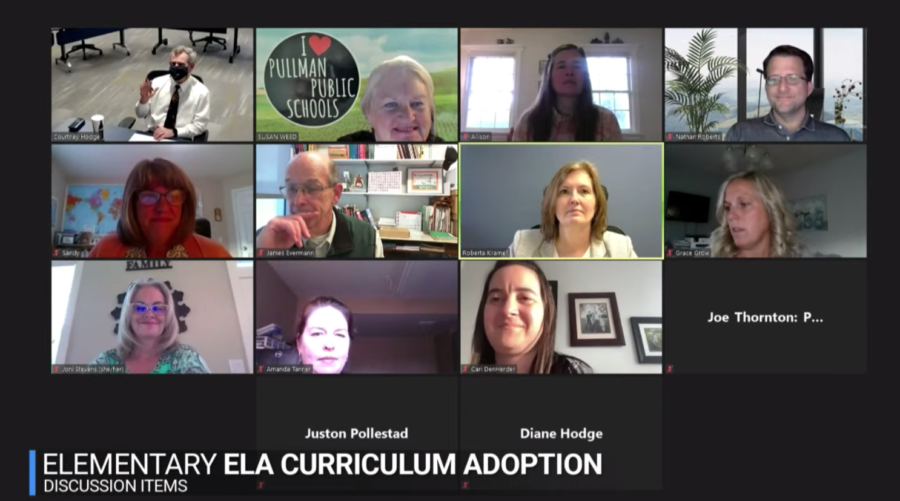Pullman school board reviews student recovery plan, new ELA curriculum
Recovery plan to be finalized by June 1; ELA curriculum to cost $288,000
“We have been really great stewards of our curriculum budget over the years because we knew something like this was coming.”
May 27, 2021
Members of the Pullman Public Schools board unanimously approved the district’s Academic and Student Well-Being Recovery Plan during a meeting Wednesday evening.
The Washington State Office of Superintendent of Public Instruction requires school districts to have an equity tool, said Assistant Superintendent Roberta Kramer.
Kramer presented a draft of the district’s equity rubric at the meeting.
The rubric aims to assess the quality of the recovery plan by evaluating whether the school district communicates with and provides critical support to students and families. The rubric is also used to measure whether the school district identifies the most vulnerable population(s) it serves, offers equitable educational and technological resources to students, and is adequately staffed, according to the rubric.
Superintendent Bob Maxwell proposed a resolution to the recovery plan for board members to consider as an action item for the evening. The board unanimously passed the resolution.
The resolution accompanies the recovery plan, Maxwell said.
“The resolution basically talks about creating this [Academic and Student Well-Being Recovery Plan] as part of the next progression in dealing with the effects of the pandemic,” Maxwell said.
The school district must submit the overall plan to OSPI by June 1, 2021, Maxwell said.
The plan will also “address student needs resulting from school building closures and extended time in remote learning due to the COVID-19 pandemic,” according to the resolution.
Board members also approved the adoption of a new K-5 English Language Arts curriculum.
The school district’s ELA Instructional Materials Adoption Committee recommended acquiring the new curriculum, Collaborative Literacy from the Center for the Collaborative Classroom, for the past two school years, according to the curriculum summary.
Kramer said StoryTown, the curriculum the school district previously used, was outdated.
She said she anticipated the Collaborative Literacy program to cost $400,000, but the cost is only $288,000.
“We’re getting two programs for one, Kramer said.” “We’re getting a full-grown literacy and writing program. A huge part of our purchase will be purchases of classroom libraries.”
Teachers have repeatedly expressed that students need a range of text at different reading levels for them to engage with, she said.
Additional costs to purchase materials to support classroom instruction annually are uncertain. Kramer said costs to support professional development can range up to $10,000 each year.
“We have been really great stewards of our curriculum budget over the years because we knew something like this was coming,” she said.









